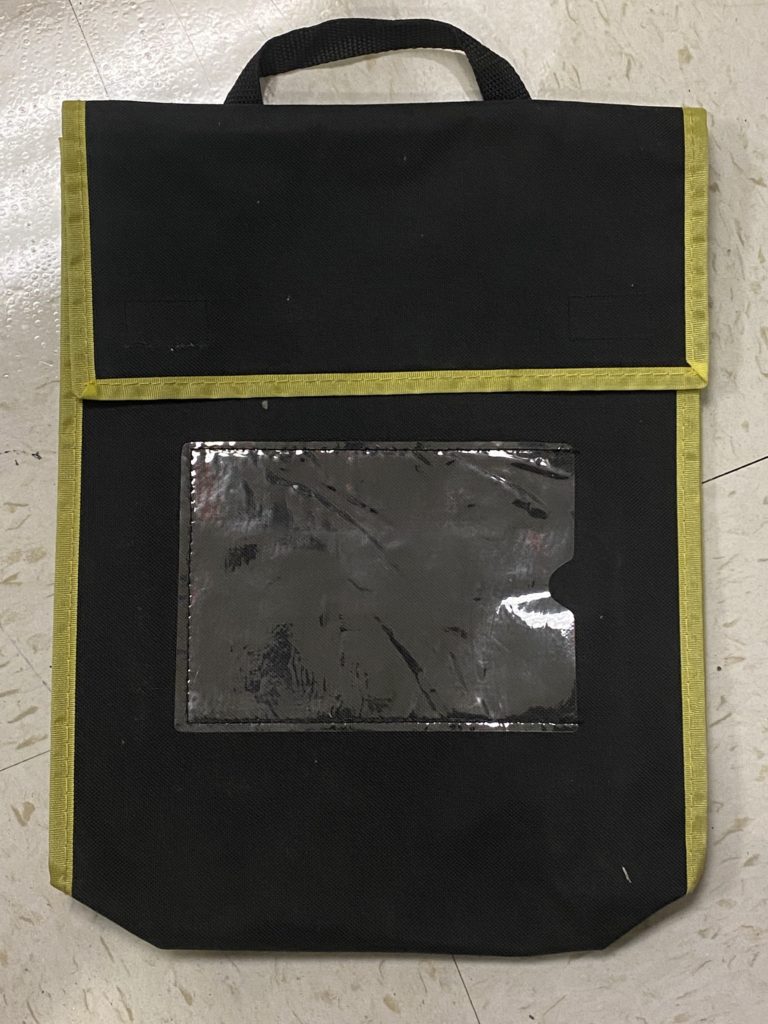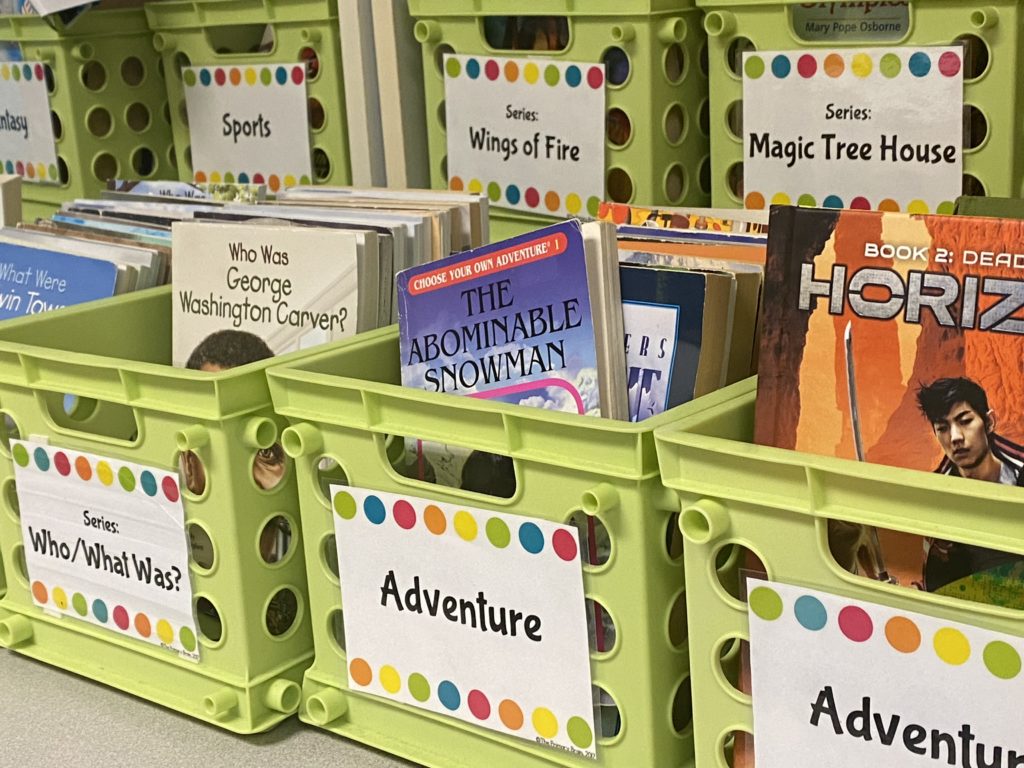Viewing: grades
September 6, 2022
Class Library, Book Bags, Math Mindset, and more!
In class today, after much anticipation, our class library opened for business! We spent a lot of time discussing how the library is organized, our routines for checking out and returning books, and much more! Students each received a black and yellow bag for bringing home (and returning to school) one or two books each night. This should come home nightly and should be returned the next day. In the next week or two, I will start sending home reading logs for kids to use to track their reading. (More on this in the coming weeks.) The kids were VERY excited to begin using our massive class library (which, I’m proud to say, offers well over 1,000 books)!
One of the students’ homework assignments this week is to build a list of between four and eight of their current favorite books. Families are welcome to help their kids, as I know it can help the fourth graders to have someone to remind them of books they’ve enjoyed. But students are welcome to complete this independently if they prefer. This is due Friday morning and will help us to kick off our efforts to build life-long readers.
Today, we launched our year of math by discussing the challenges I had with math as a child and by talking about the importance of a growth mindset. We watched an amazing video by Jo Boaler, a researcher and professor of math education, all about building sound and sustainable habits when working on math. The kids’ math homework is to share this video with a grown-up at home and to discuss it. The link is in their Google Classroom page, and as you watch the video, it will periodically pause to present a question/topic for you and your fourth grader to discuss. I know your schedules are very busy, so I’ve asked kids to finish it by Friday. If you would like the weekend to get it done, that’s no problem. Just send me a quick email.
One of the ideas presented in the video is about the relevance of grades. You’ll find that math assessments are one of the only worksamples that will come home with a percentage grade on it. I don’t like relying on percentages, because I think they give you an incomplete understanding of your child’s progress. Consider this scenario:
Imagine a class takes a 16 item assessment that is divided into four sections, each with four items. “Mary” gave one incorrect answer in each section, so she has a score of 12/16, or 75%. Because Mary correctly solved most of the problems in each section, I would consider her to be making “good progress,” despite 75% being seen by SOME as lack-luster score. Another student, “Bobby” also scored 12/16 (75%), but in his case, he had all four of his incorrect answers in a single section. This indicates that there was one area in which he needed more intensive review and support. Both kids received the same score of 75%, but their assessments yielded very different results.
This is just one example of the dangers of over-emphasizing the total score. When I review student work, I look at what they DO know, not what they DON’T know, and I ask you to do the same. I’ll write more about this before the first math assessment comes home, but here are a few highlights to consider as you talk about grades with your child while watching the video:
- Kids are more than test scores. So often, they base their self-image of how they’re doing on measurable metrics. They think that a good math grade means that they’re smart and good at math, and that a poor grade means they’re dumb and bad at the skill. This couldn’t be more wrong! I’ve seen outstanding students who struggle with test-taking or get overwhelmed by long assessments. (We work on these challenges together.)
- PLEASE, PLEASE, PLEASE do not set percentage goals for assessments. When students learn that 80% is the minimum acceptable grade, for example, it means that a 78% is a disaster. Surely two percentage points doesn’t make or break a child’s success in fourth grade. Instead, set behavioral goals, like “Answer each question fully, without skipping steps.” or “Check your work over to make sure your calculations are accurate.” or “Reread problems to make sure you correctly understood the question.” or “Draw the problem out to better understand it.” Grades are just one indicator of progress. They don’t solely indicate success or failure.
- When your child brings home work, start by looking for strengths. So often, we parents begin by quickly looking for the ink from a teacher’s pen to see where there were mistakes. But wouldn’t we rather see our kids’ successes? Reinforce the successes, rather than dwelling on the mistakes.
- When you do see mistakes or lost points, talk with your child about why it happened. Don’t blame, just reflect. Consider a math assessment in which your child got a 66%. I think we can all agree that we’d like our kids to do better. But think back to that example I offered above. This is a similar situation. Ask yourself: Was it a 66% because your student really struggled with one part of a concept, or was the challenge spread out more consistently? Even if the lost points were distributed throughout the assessment, think about what a 66% means. A student CORRECTLY answered 2/3 of the assessment to earn those points. Clearly he or she knows a lot about a concept to do that well to begin with, even if a 66% feels disappointing to us. Start with that mindset, and then work from there.
I hope this was helpful for you, and I look forward to talking more as the year continues! As always, feel free to reach out to me with any questions!
Posted in Class Updates|By Jon Moss
March 2, 2016
Where is your child’s work and grades?
It wasn’t so long ago that parents could open their child’s homework folder and find corrected language arts work coming home on a regular basis. These reading and writing exercises had teacher comments and a grade, and parents could see what their child was working on in school. This year, those same opportunities exist, but it’s all online now. When we met for December parent-teacher conferences, I discussed Google Classroom with many families. With our next round of conferences coming later this month, I thought this would be a good time to remind you of this wonderful resource.
Google Classroom is a core part of Google Apps for Education. Think of it as a learning management system that allows me to share resources, distribute files, assign tasks, and allows students students to complete and submit tasks, receive feedback, discuss ideas with peers, and more. (The short video above, while slightly out of date, does a great job of showing what Google Classroom can do.)
Nearly ALL of your child’s written work is completed on a Chromebook, within Google Classroom. Parents of PGS fourth graders should ALWAYS be able to access their child’s Google Classroom account (using their child’s username and password, which should always be shared with parents). To login, visit classroom.google.com and log in with your child’s username and password. There, you’ll find a lot of your forth grader’s work, along with my feedback and grades. Sometimes grades may be posted in the Google Classroom assignment section, but I often put grades within the student’s document itself. I encourage you to check Google Classroom on a periodic basis, although the one thing I ask is that you NOT make revisions to your child’s work without checking with me. A lot of what you’ll find is a work-in-progress, and it’s important that students have the opportunity to learn by working through a process, rather than having corrections made by an adult at home. (Remember, you’re logging in as your fourth grader, not under some separate parent account. So there’s no way for me to distinguish work your child does from revisions you may make.)
If you have any questions, please feel free to contact me.
Posted in Class Updates|By Jon Moss


